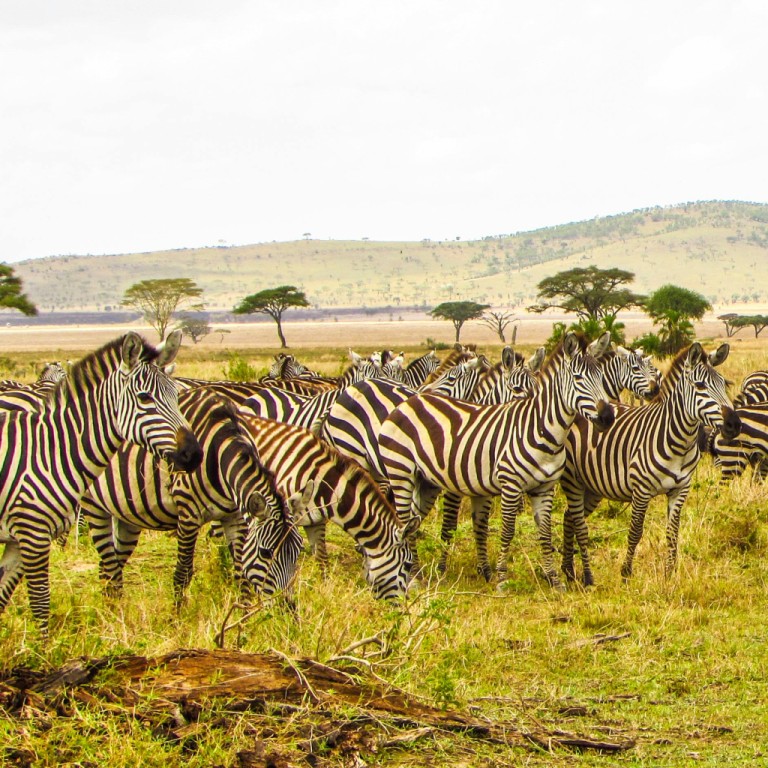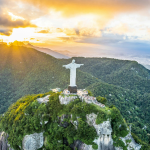Nestled in the heart of East Africa, Serengeti National Park is a vast and untamed wilderness that epitomizes the raw beauty and majesty of nature. Covering an expansive area of approximately 14,750 square kilometers (5,700 square miles), this iconic national park is renowned for its diverse ecosystems, abundant wildlife, and the awe-inspiring Great Migration. Join us as we embark on a journey through the Serengeti, uncovering the secrets of its landscapes, the richness of its wildlife, and the experiences that make it one of the world’s most cherished natural treasures.
A Glimpse into the Serengeti
The Origins and Significance
The name “Serengeti” is derived from the Maasai word “Siringet,” which means “endless plains.” This name is fitting, as the park’s vast, open landscapes seem to stretch infinitely, offering a sense of boundless freedom and adventure. Established in 1951, Serengeti National Park is not only Tanzania’s oldest national park but also a UNESCO World Heritage Site, recognized for its outstanding universal value.
Geographical Diversity
The Serengeti’s geography is as diverse as its wildlife. The park is characterized by its varied landscapes, including:
- Endless Plains: Central Serengeti is dominated by seemingly limitless grasslands, home to large herds of herbivores and their predators.
- Kopjes: These rocky outcrops provide shelter and vantage points for predators like lions and leopards, as well as resting spots for herbivores.
- Riverine Forests: The Seronera River Valley, with its lush vegetation, supports a variety of bird species and serves as a crucial water source for animals.
- Woodlands and Swamps: The Western Corridor features woodlands and swampy areas, attracting elephants, giraffes, and other large mammals.
- Grumeti and Mara Rivers: These rivers are lifelines for wildlife, especially during the dry season, and are famous for their dramatic crocodile encounters during the Great Migration.
The Great Migration: Nature’s Grandest Spectacle
One of the most extraordinary natural events on Earth, the Great Migration, is synonymous with Serengeti National Park. This annual phenomenon sees over 1.5 million wildebeest, along with hundreds of thousands of zebras and gazelles, embark on a perilous journey in search of fresh grazing grounds and water. The migration is driven by the changing seasons, with the animals following the rains in a clockwise direction through the Serengeti and the adjoining Maasai Mara in Kenya.
Key Stages of the Migration
- Calving Season (January to March): The southern Serengeti, particularly the Ndutu region, becomes a nursery as thousands of wildebeest calves are born. This period offers an incredible opportunity to witness newborns taking their first steps and the intense predator-prey interactions.
- Grumeti River Crossings (May to July): As the herds move northwest, they face the daunting task of crossing the crocodile-infested Grumeti River. These dramatic crossings are a highlight for wildlife enthusiasts and photographers.
- Mara River Crossings (July to September): The most famous and perilous stage of the migration occurs as the herds cross the Mara River into Kenya. The river’s strong currents and lurking crocodiles make this a gripping and sometimes heartbreaking spectacle.
- Return to the Serengeti (October to December): The herds journey back to the Serengeti’s southern plains, completing their epic cycle.
Wildlife Encounters: A Biodiversity Haven
The Serengeti’s rich biodiversity is unparalleled, providing a sanctuary for an array of species. The park is home to the Big Five—lions, leopards, elephants, buffalo, and rhinos—along with numerous other mammals, birds, reptiles, and insects.
Predators and Prey
- Lions: Known as the “King of the Jungle,” Serengeti’s lion population is one of the largest in Africa. Visitors can observe these majestic predators lounging on kopjes, stalking prey, or caring for their young.
- Leopards: These elusive and solitary cats are often spotted in the Seronera region, gracefully perched in trees or stealthily moving through the underbrush.
- Cheetahs: Renowned for their incredible speed, cheetahs are frequently seen in the park’s open plains, where they hunt during the day.
- Hyenas and Wild Dogs: These formidable scavengers and hunters play a crucial role in the Serengeti’s ecosystem, ensuring a balance between predator and prey.
Herbivores
- Elephants: The park’s woodlands and riverine forests provide a haven for large herds of elephants, which are often seen bathing in rivers or feeding on acacia trees.
- Giraffes: The world’s tallest land animals, giraffes, are a common sight, gracefully moving through the park’s woodlands and savannas.
- Zebras and Gazelles: These herbivores form an integral part of the Great Migration, often mingling with wildebeests as they traverse the plains.
Birdlife
With over 500 bird species recorded, the Serengeti is a birdwatcher’s paradise. From the striking African fish eagle to the vibrant lilac-breasted roller, the park’s avian diversity is a delight for enthusiasts.
Safari Adventures: Immersive Experiences
Exploring the Serengeti offers a variety of safari experiences, each providing a unique perspective on this remarkable ecosystem.
Game Drives
Guided game drives are the quintessential way to experience the Serengeti. These excursions, typically conducted in open 4×4 vehicles, allow visitors to traverse different regions of the park, encountering wildlife up close. Expert guides share their knowledge about animal behavior, ecology, and the park’s history, enriching the safari experience.
Hot Air Balloon Safaris
For a truly unforgettable adventure, a hot air balloon safari offers a bird’s-eye view of the Serengeti’s vast landscapes. Floating silently above the plains at sunrise, guests can witness the Great Migration from above, capturing breathtaking photographs and memories.
Walking Safaris
Walking safaris provide an intimate connection with the Serengeti’s flora and fauna. Accompanied by experienced guides and armed rangers, visitors explore the park on foot, learning about the smaller details of the ecosystem, tracking animals, and experiencing the wilderness in a more immersive manner.
Cultural Visits
Interacting with the local Maasai communities adds a cultural dimension to the Serengeti experience. Visitors can learn about the Maasai’s traditional way of life, their deep connection to the land, and their efforts in conservation and sustainable tourism.
Conservation Efforts: Preserving a Natural Heritage
The Serengeti faces numerous challenges, including poaching, habitat loss, and human-wildlife conflict. However, concerted conservation efforts by the Tanzanian government, non-governmental organizations, and local communities are making a significant impact.
Anti-Poaching Initiatives
Stringent anti-poaching measures, increased patrols, and the use of technology like drones and GPS tracking have helped curb illegal activities and protect vulnerable species, particularly rhinos and elephants.
Community Involvement
Engaging local communities in conservation efforts is crucial for the Serengeti’s future. Initiatives that provide alternative livelihoods, education, and benefits from tourism encourage communities to become stewards of the environment.
Sustainable Tourism
Promoting eco-friendly tourism practices, minimizing environmental impact, and supporting conservation projects through tourism revenue are essential strategies for preserving the Serengeti’s natural heritage.
Practical Information for Visitors
When to Visit
The best time to visit Serengeti National Park depends on what you want to experience:
- January to March: Ideal for witnessing the calving season in the southern Serengeti.
- May to July: Best time for viewing the Grumeti River crossings.
- July to September: Perfect for witnessing the dramatic Mara River crossings.
- October to December: Great for experiencing the migration’s return to the southern plains.
Getting There
Serengeti National Park is accessible by road and air. Most visitors fly into Kilimanjaro International Airport or Arusha Airport and then take a connecting flight to one of the park’s airstrips. Alternatively, overland safaris from Arusha offer a scenic route through Tanzania’s stunning landscapes.
Accommodation
The park offers a range of accommodation options, from luxury lodges and tented camps to budget-friendly campsites. Some notable lodges include:
- Four Seasons Safari Lodge Serengeti
- Serengeti Serena Safari Lodge
- Singita Grumeti Reserves
Tips for a Memorable Safari
- Pack Wisely: Bring comfortable clothing, sturdy footwear, binoculars, a good camera, and sun protection.
- Stay Informed: Follow the advice of your guides, respect wildlife, and adhere to park rules.
- Be Patient: Wildlife sightings can be unpredictable; patience and perseverance often lead to the most rewarding experiences.
Conclusion: The Serengeti’s Timeless Allure
Serengeti National Park is more than just a destination; it’s a testament to the resilience and beauty of nature. Its endless plains, diverse ecosystems, and breathtaking wildlife encounters offer a glimpse into a world where life unfolds in its purest form. Whether you’re a seasoned safari enthusiast or a first-time visitor, the Serengeti’s timeless allure promises an adventure that will leave you spellbound and inspired.
Embark on this journey, and share the wonder of the Serengeti with others. The stories and experiences you gain here are not just your own—they are part of a larger narrative that celebrates the splendor and fragility of our natural world.






